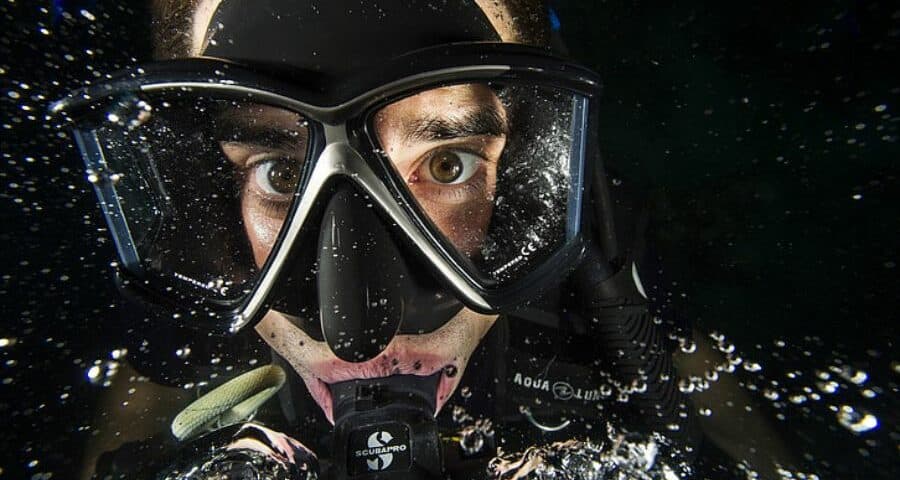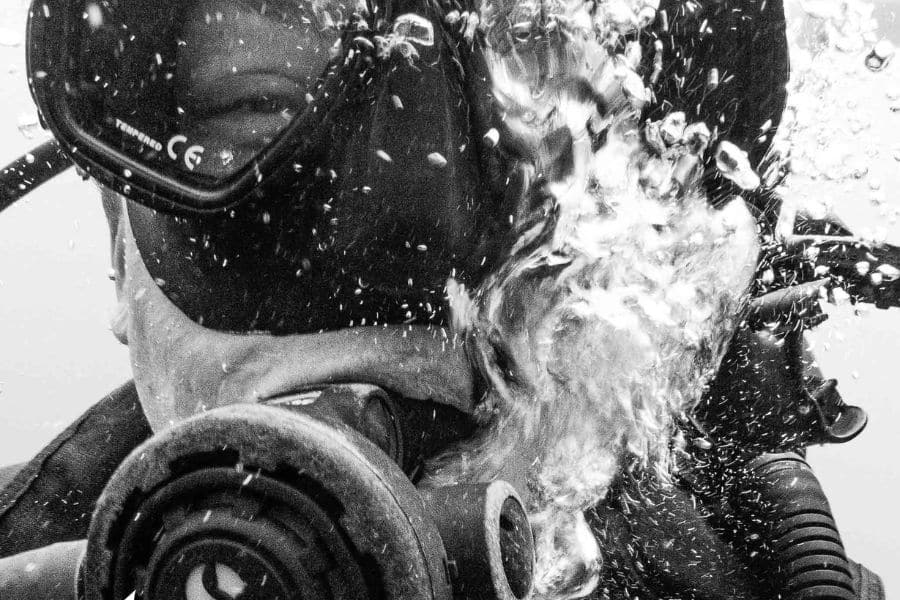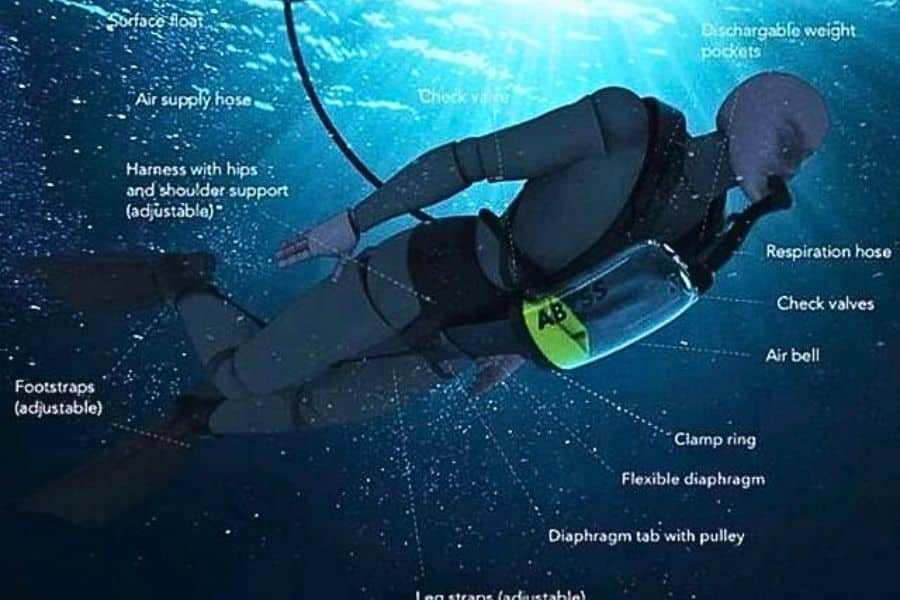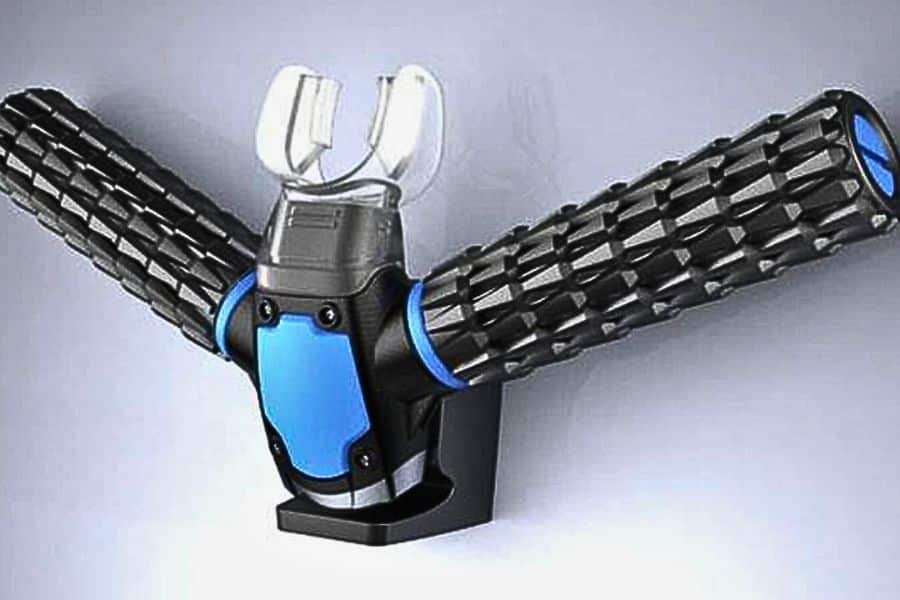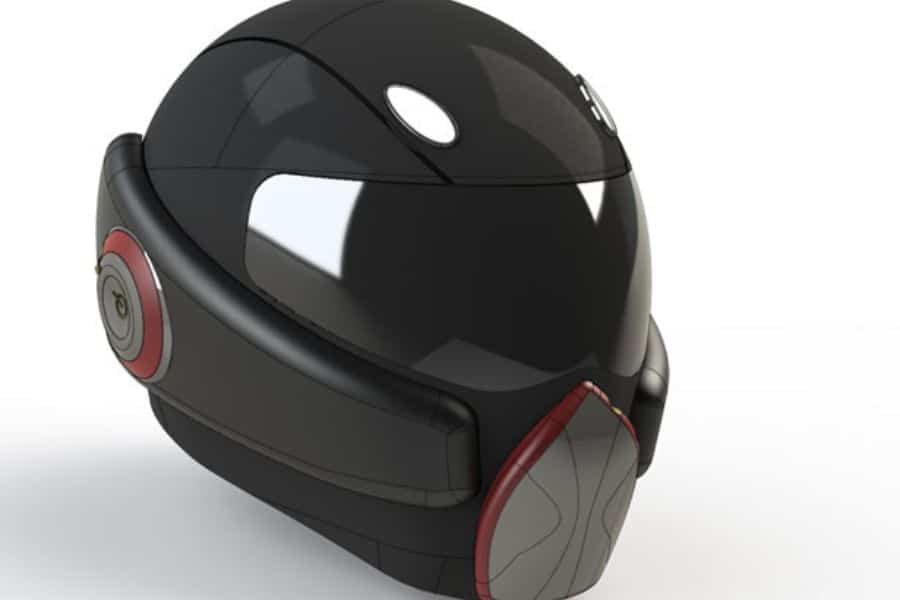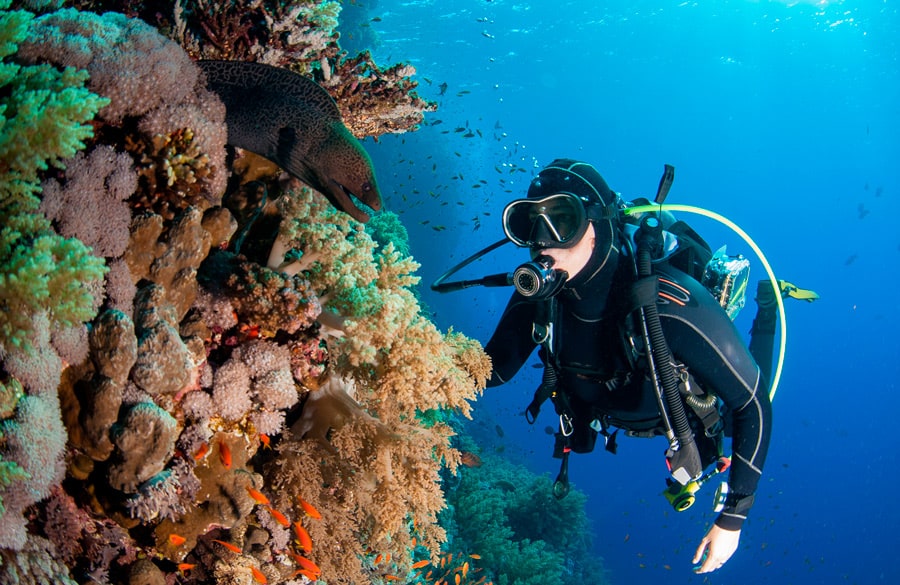2.2. Exolung, Bridging the Gap Between Snorkeling and Surface-Supplied Underwater Breathing Systems
The ExoLung aims to be a groundbreaking innovation in tankless underwater breathing apparatus. It’s essentially an “artificial lung” for divers, theoretically providing unlimited air by harnessing the user’s body movements to draw air from the surface.
This small underwater breathing device consists of a floating buoy on the surface, connected to an artificial lung strapped to your chest by a 5-7m (16-23ft) hose. Inside that chest-mounted box is an air chamber powered by leg movements. When you extend your legs, fresh air is pulled from the surface into the lung. Retracting your legs forces water to push the air into your lungs at ambient pressure for you to inhale.
Easy? Not so much. While the concept seems simple, coordinating kicks with breathing isn’t something you’ll master right away.
Between us, I don’t think this is the invention that will make us forget compressed air tanks. Honestly, it feels better suited for curious snorkelers who aren’t ready to make the leap to scuba diving breathing equipment.
Let’s be real—this underwater breathing device looks like a snorkel with aspirations. Sure, it’s more sophisticated but also much longer. The most intriguing aspect is how it forces your legs to move unnaturally in sync with your breathing. And let’s face it, if you’re not in good shape, your dive will last about as long as a gasp—pun intended.
2.3. ORB Scuba Diving Helmet: A Rebreather in a Helmet
What happens when a college junior combines a futuristic helmet with a closed-circuit rebreather? You get something like the ORB Scuba Diving Helmet, a conceptual design (meaning no prototype exists yet) for a self-contained underwater breathing apparatus that could revolutionize how we explore the ocean.
This is the brainchild of Thomas Winship, a student at Staffordshire University in the UK, who decided that carrying half a dive shop on your back is no longer cool.
The goal of this invention is to minimize the bulky equipment associated with traditional scuba breathing apparatus. While only sketches and a scale model exist for now, it’s easy to dream of a future where, in the movies, a stunning protagonist emerges from the water, helmet on, dazzling the audience as they dramatically remove it in front of the camera.
Winship explained to design site Tuvie that this underwater breathing apparatus will use multi-layered materials to relieve ear pressure. The matte-finished outer shell would be made from ABS plastic, and if that’s not enough, the helmet would include Bluetooth technology. Why? To let you socialize and share real-time data about your surroundings while diving. Yes, now you can be that friend live-commenting on every fish you see.
A helmet that combines comfort and innovation with a touch of “Black Mirror” underwater? Could this be the future of diving? Maybe. Ready to try it? Absolutely.




